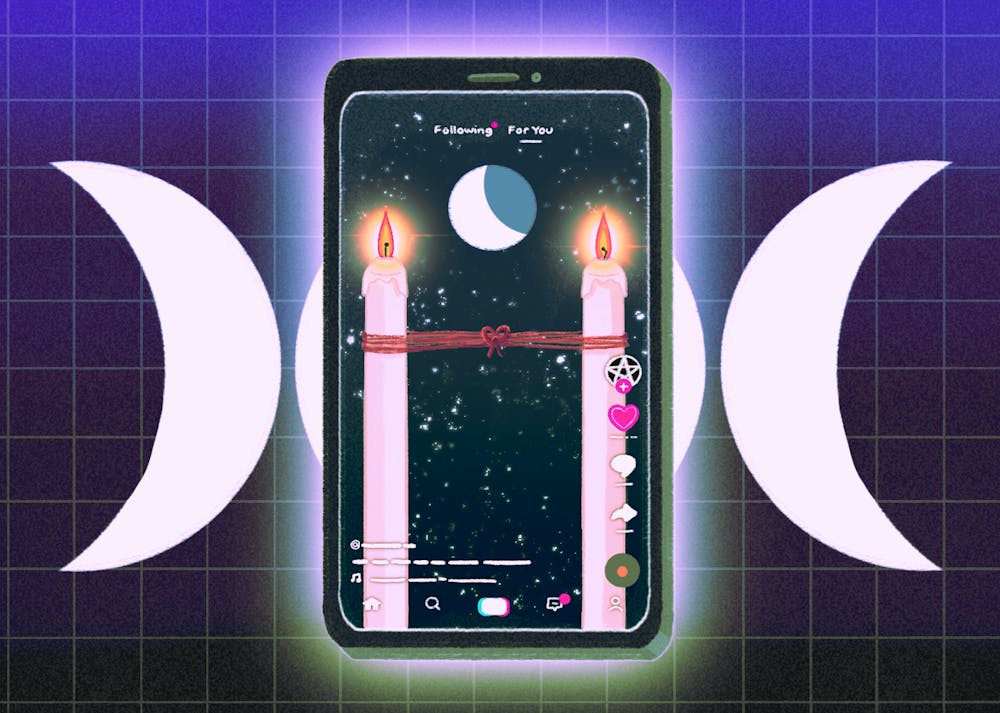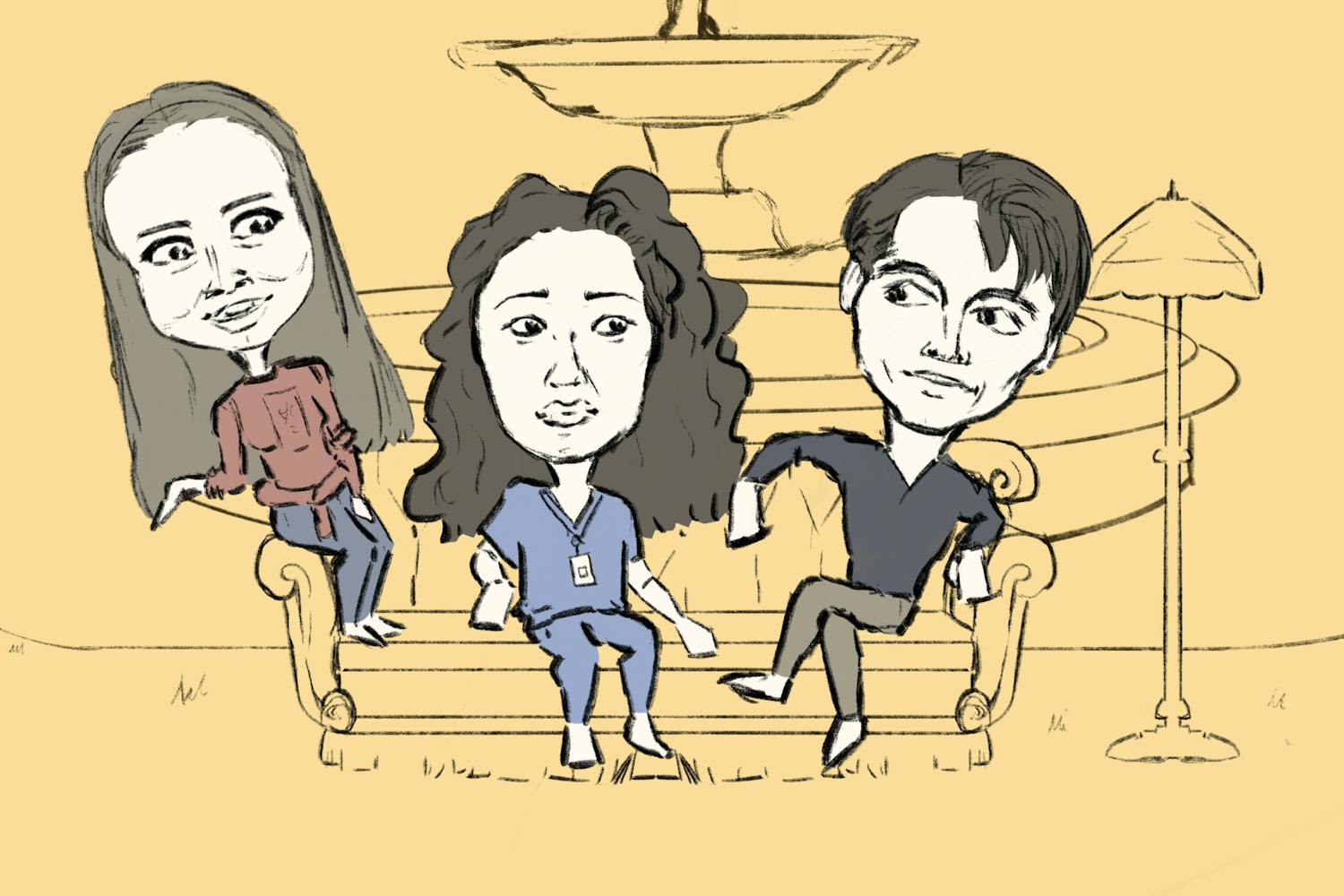If you've been scrolling through TikTok, there's a good chance you've stumbled upon videos of a more mystical nature.
From crystal healing to tarot readings and maybe even a few tutorials for casting small-scale spells, these videos may seem out of left field for some users' For You pages, but they're actually part of a greater spiritual community in the TikTok subculture "WitchTok."
Dating back to around 2019, the witch community has steadily grown to become one of TikTok's most recognizable subcultures with hashtags like #WitchTok garnering over 10 billion views.
The growth of WitchTok is just the latest example of a surging interest in the supernatural among the social media generation. Everywhere you look it seems more people are talking about zodiac sign compatibility and aura readings.
For people like Em Torres, a junior studying transborder Chicana/o and Latina/o studies and creative writing, the openness of practicing witchcraft is a prime example of why so many people get into it.
"We don't have a book," Torres said. "In religion, people have books. People have these things to guide them and show them what is real and what is wrong and what the rules are."
Torres first got into witchcraft after being introduced to crystals, which not only served as her gateway to learning more about standard mystical practices like tarot and manifesting, but also allowed her to connect more with her own cultural background.
READ MORE: Insight: I found spirituality through my grandma’s witchcraft
For Torres, the increased visibility that social platforms like TikTok present can be helpful for new witches figuring out their practices, but in many cases, the content can be incredibly hit-or-miss.
"A lot of people on TikTok kind of do stuff just to do them, without regard of who it could hurt and who's watching them," Torres said.
In particular, Torres expressed frustration with accounts that perform mass tarot readings with seemingly limited knowledge on how to do so. Arizonan and TikTok user Tatum Wright likes the concept of mass readings, but said people have to be educated on the subject.
"I like that people are doing the mass readings," Wright said. "But you have to know what you're talking about before you just kind of throw it out there."
For Wright, a single mom whose practices focus on premonitions, the downside to much of WitchTok is too many accounts are in it for views, more than anything else. However, she credits the platform's witch community for helping her learn more about herself and develop her own beliefs.
"Before TikTok came about, I had a sense that I was a witch but I had no idea how to connect to other people that thought the same thing," she said. "As soon as TikTok started opening up, I just kind of accidentally started finding videos and they would answer little things."
Wright believes that TikTok has attracted such a strong witch community because the video aspect of the platform makes it more appealing to new members.
"I think witches are visual," Wright said. "You can post pictures on Instagram and kind of do step-by-steps, but when you actually see things, it's very different."
One common critique of the platform is the large number of white creators who seemingly take from the traditions of "closed cultures," exclusive spiritual systems often belonging to marginalized communities. Torres has seen a love spell in which a person paints honey, in the shape of a cross, on their tongue, being appropriated by non-Latines, even though Torres said the practice derives from brujería, a Latin American and Afro-Caribbean spiritual practice.
"Constantly BIPOC have been thrown off the ladder when it comes to things like this," Torres said. "We aren't giving space to the people who should be given the space."
Despite this, Torres believes the WitchTok community has helped bring about greater acceptance of witch communities, allowing for more people to learn about various practices and become more welcoming.
"There's always going to be little pros and cons to everything," Torres said. "But I feel like there's more questions that are answered now, because of this huge platform and resources."
Reach the reporter at nmdelga3@asu.edu and follow @DelGoada on Twitter.
Like The State Press on Facebook and follow @statepress on Twitter.
Continue supporting student journalism and donate to The State Press today.




